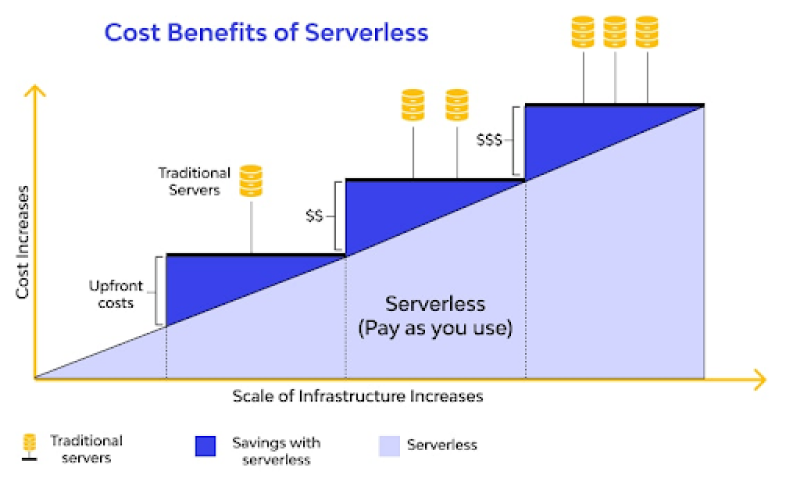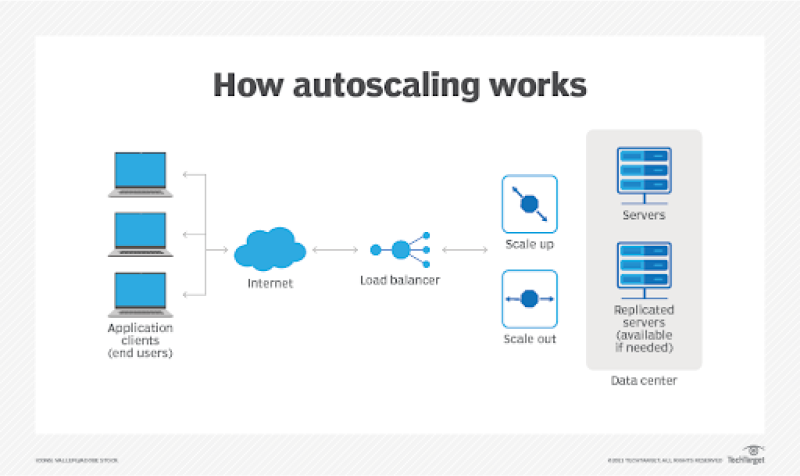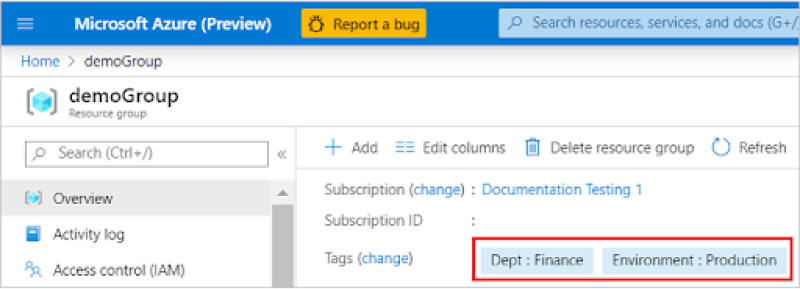A plausible textbook definition of cloud cost optimization
Cloud cost optimization is the process of managing and reducing the costs associated with cloud computing while maintaining or improving the quality of service. It involves analyzing cloud usage data, identifying underutilized resources, leveraging cost-saving strategies, and continuously monitoring and tracking cloud costs to ensure optimal resource utilization and cost efficiency.
The ever-increasing need for cloud cost optimization
From start–ups serving a handful of customers to enterprises with a globe-spanning business presence, cloud cost optimization is critical to maintaining a healthy bottom line for every business.
There are three primary reasons why your business should not ignore cloud cost optimization:
If you are a cloud-first business, cloud application costs are a significant portion of your IT budget. Optimizing such a substantial part of the budget can result in significant cost savings.
Second, with the increasing adoption of cloud computing, it is necessary to proactively optimize cloud costs to ensure that you are not overspending on cloud resources in the present or overcommitting expenses for the future.
Finally, by optimizing cloud costs, your IGT department would be in a better position to free up resources to invest in other areas of the business, such as developing new product lines, expanding revenue channels, etc., which would ultimately lead to improved business outcomes.
However, to avail of these benefits, your business must overcome certain challenges that businesses normally face when optimizing cloud costs.
Challenges to overcome en route your cloud cost optimization journey
Optimizing cloud costs is an essential part of managing a modern business, but it is not without its own share of challenges. The most common ones include:
- Lack of end-to-end infrastructure visibility
- Complex consumption pattern
- Lack of IT cost optimization expertise
- Difficulty predicting usage
- Vendor lock-in
- Security and compliance concerns
- Lack of end-to-end infrastructure visibility
One of the biggest challenges a business faces when optimizing cloud costs is the lack of visibility into its cloud infrastructure. Without visibility into their cloud usage data, businesses may find it challenging to identify non-functional areas and opportunities for cost optimization.
2. Complex consumption pattern
Cloud environments can be complex, with many interdependent resources and services. Managing these resources and services can be challenging, and it can be difficult to determine which resources are being used efficiently and which are not.
3. Lack of IT cost optimization expertise
Cloud cost optimization requires specialized expertise, both in terms of understanding cloud technology and financial dexterity. Unfortunately, not many businesses have the necessary skills in-house. Without the necessary expertise, businesses may struggle to identify and implement cost-saving measures.
4. Difficulty predicting usage
The primary reason why businesses opt for cloud services is that they can be scaled dynamically according to business needs. However, this upside is also the downside of cloud computing. For a growing enterprise with volatile IT resource consumption, predicting future cloud usage is tricky. Even with a dedicated business analytics department, you may find it challenging to anticipate changes in bandwidth consumption patterns, which makes it difficult to plan and allocate a budget for cloud resources effectively.
5. Vendor lock-in
Cloud services usually function as pay-as-you-use models. However, to avail of the maximum cost-benefit, businesses often have to opt for long-term subscriptions. For example, subscribing to a service for 2 years or 3 years to get a discounted annual plan. Such a scenario is akin to a vendor lock-in in the traditional engagement model. Such a vendor lock-in will make it challenging to switch to a more cost-effective provider at a later stage. This can limit their ability to optimize cloud costs and can result in overspending on cloud resources.
6. Security and compliance concerns
With an increasing focus on user data security and privacy, governments and institutions all over the world are introducing new policies and regulations. This puts pressure on businesses to ensure that their cloud infrastructure is secure and compliant with relevant regulations. However, implementing security and compliance measures on an ad hoc basis can prove to be costly. Most importantly, balancing such security and compliance requirements with cost-optimization efforts is never going to be easy.
Overall, these challenges can make optimizing cloud costs a complex and challenging task. However, by addressing these challenges and implementing effective cost optimization strategies, businesses can achieve significant cost savings while maintaining high levels of service quality.
Let us look at some tactics that can surpass these challenges and help in achieving maximum ROI from your cloud investments.
5 Actionable Ways to optimize your cloud costs
When it comes to optimizing cloud costs, taking a data-driven approach is critical. By analyzing cloud usage data and identifying underutilized resources, businesses can implement effective cost-optimization strategies that improve their bottom line.
Let us take a closer look at some actionable best practices for cloud cost optimization that your business can implement to achieve maximum cost optimization.
Choosing the right cloud service provider to implement cost allocation and chargeback mechanisms, these best practices will help your business reduce cloud costs while maintaining high levels of service quality.
Jump to the specific navigation that you are keen to learn about:
- Selecting the right cloud service provider
- Leverage cloud provider discounts and reservations to save costs
- Deploy advanced tactics for cost optimization
- Identify and eliminate underutilized resources
- Implement cost allocation and chargeback mechanisms
- Select the right cloud service provider
Selecting the right cloud service provider is an essential part of optimizing cloud costs. There are several factors to be considered while selecting a cloud service provider.
One among them is the pricing model. Different cloud service providers have different pricing models and cost structures, that have their own set of advantages and disadvantages, and businesses need to choose a provider that aligns with their cost optimization goals.
Some of the pricing models include:
- Pay-as-you-go
- Reserved instances
- Spot instances
Next is the availability of built-in cost optimization tools and features. These include cost calculators, cost allocation, and chargeback mechanisms (We shall discuss this in detail shortly). They let you do your own math and arrive at a ballpark estimate of resource consumption and efficiency optimization.
Finally, the quality of service offered by the cloud service provider. While cost optimization is critical, businesses should not compromise on service quality. Choosing a provider with a strong track record of service quality and reliability can help you prevent costly downtime and ensure that their cloud infrastructure is always available to support your business needs.
All being said, selecting the right cloud service provider is a critical component of cloud cost optimization.
2. Leverage cloud provider discounts and reservations to save costs
Cloud provider discounts and reservations can be an effective way to save on cloud costs. This is how businesses can leverage these cost-saving measures:
- Reserved Instances: Many cloud providers offer reserved instances that allow you to reserve compute capacity for a set period in advance. This can result in significant cost savings, as they are typically cheaper than on-demand instances.
- Spot Instances: Spot instances allow businesses to bid on unused compute capacity. They are typically cheaper than on-demand instances, but the downside is that they may be terminated at any time if the provider needs the capacity back.
- Preemptible VMs: Similar to spot instances, preemptible VMs allow businesses to leverage on unused compute capacity and are cheaper than on-demand instances, but they may be discontinued at any time if the provider needs the capacity back.
The difference between spot instances and preemptible VMs is that the latter can run only for 24 hours at a time, whereas spot instances have no time limit. So, consider them ideal to tide over short-term instances when bandwidth consumption spikes unexpectedly. - Committed Use Discounts: Many cloud providers offer committed use discounts that provide businesses with discounted rates if they commit to using a certain amount of computing capacity for a set period. For example, AWS offers an Enterprise Discount Program (EDP) which offers a negotiated discount in the range of 5-10% in exchange for committing to an annual spend.
- Volume Discounts: Some cloud providers offer volume discounts that allow businesses to avail discounted rates if they use a certain amount of cloud resources.
To effectively leverage these discounts and reservations, businesses need to have a good understanding of their cloud usage patterns and requirements. By analyzing their usage data and identifying opportunities to reserve capacity or bid on unused capacity, businesses can achieve significant cost savings while maintaining high levels.
Source: https://www.densify.com/finops/aws-cost-saving-steps/
3. Deploy advanced tactics for cost optimization
Three advanced tactics can be highly effective in optimizing cloud costs.
- Containerization
- Serverless computing
- Auto-scaling
The underlying benefit of these three strategies is that they offer businesses the ability to allocate resources more efficiently, reduce waste, and lower their overall cloud computing costs.
Here is what each tactic means and how to implement them:
Containerization is a technique for packaging and deploying software applications as lightweight, standalone units called containers. They are extremely portable and can run on any cloud infrastructure or platform (For example AWS, GCP, etc.), making it easier for businesses to move their applications between different cloud providers without any lock-in.
Source: https://www.xenonstack.com/insights/containerization
Serverless computing allows businesses to run their applications without the need to manage server infrastructure, reducing the cost and complexity of their cloud operations. It charges businesses based on the actual usage of their applications, rather than charging for idle resources, which can result in significant cost savings.

Source: https://www.wallarm.com/what/what-is-serverless-computing
Auto-scaling allows businesses to automatically adjust their cloud resources based on changes in demand. By scaling up and scaling down resources during periods of high demand and low demand respectively, businesses can avoid overprovisioning and minimize idle resources, resulting in lower cloud costs.

Source: https://www.techtarget.com/searchcloudcomputing/definition/autoscaling
4. Identify and eliminate underutilized resources
For cloud cost optimization, we can borrow a page or two from the lean manufacturing philosophy that Japan perfected during its economic resurgence. The lean manufacturing philosophy is a rather simple one — identifying and eliminating waste, leading to improved production times and quality, and reduced costs.
Underutilized resources, in any business or function, refer to resources that are not being used effectively or are being used but not to their full potential. These resources can contribute to wasted spend and can result in unnecessary costs.
In the cloud cost optimization context, these steps should help you identify and eliminate underutilized resources:
- Analyze usage data
Cloud service providers do provide built-in dashboards that give periodical reports of bandwidth consumption. By examining usage data, businesses can identify the resources that are being used or underutilized. You can even set up email alerts on a periodic basis to suit your monitoring needs.
2. Set up automated monitoring
Let us face it. Manual bandwidth monitoring is not practical. It demands a lot of time and effort that could be better used elsewhere. This is where automated monitoring can help. These tools can help businesses identify resources that are not being used for extended periods and can help flag potential issues before they become costly. You may even tweak your business processes based on reports from automated monitoring to save cloud costs. For example, businesses can use automation to shut down resources that are not being used during specific hours, such as overnight or on weekends.
3. Use resource tagging
Resource tagging is a technique used to label cloud resources with metadata, such as the purpose of the resource or the department that uses it. By tagging resources, you can gain better visibility into resource usage and identify underutilized resources more quickly. For example, Microsoft Azure lets you use tags to organize your Azure resources and management hierarchy.

Source:
https://learn.microsoft.com/en-us/azure/azure-resource-manager/management/manage-resources-portal#deploy-resources-to-a-resource-group
Do bear in mind that reducing costs by eliminating underutilized resources is an ongoing process. You should continue to monitor cloud usage and make adjustments as needed to achieve maximum cost optimization.
5. Implement cost allocation and chargeback mechanisms
Implementing cost allocation and chargeback mechanisms is an effective way to reduce cloud costs and promote accountability within an organization.
But what do cost allocation and chargeback mechanisms mean?
Cost allocation refers to the process of assigning cloud costs to specific departments, teams, or projects within an organization, while chargeback refers to the process of billing these costs back to the responsible parties.
Here are some benefits of implementing cost allocation and chargeback mechanisms:
- Promotes department-wise accountability for consumption
Cost allocation and chargeback mechanisms promote accountability within an organization by making departments or teams responsible for their cloud usage. This promotes a culture of cost-consciousness and encourages teams to use cloud resources more efficiently.
2. Provides visibility into consumption
By assigning cloud costs to specific departments or projects, businesses can gain better visibility into how cloud resources are being used. This visibility can help organizations make more informed decisions about where to allocate resources and which projects to prioritize.
3. Incentivizes fair usage
Cost allocation and chargeback mechanisms provide incentives for departments or teams to optimize their cloud usage. By assigning costs to specific teams, businesses can encourage them to explore more cost-effective alternatives and reduce their overall cloud spend.
4. Improves forecasting
By assigning costs to specific departments or teams, you can gain better visibility into department-wise future cloud costs. This visibility can lead to accurate cost forecasts and better planning for future cloud usage.
Cost-Effective Cloud: How to Save Money Without Sacrificing Capabilities
Bringing it all together, adopting a data-driven approach to cloud cost optimization is essential. From selecting the right cloud service provider to identifying and eliminating underutilized resources, these methods, and tactics can help businesses achieve significant cost savings. In fact, if businesses invest time to analyze cloud usage data and identify underutilized resources, they can implement effective cost optimization strategies that reduce costs while maintaining high levels of service quality.
However, achieving maximum cost optimization is an ongoing process, and businesses need to continue monitoring their cloud usage and making adjustments as needed. By doing so, businesses can ensure that they are only paying for the resources they need and that their cloud infrastructure is optimized to support immediate as well as long-term growth needs.




